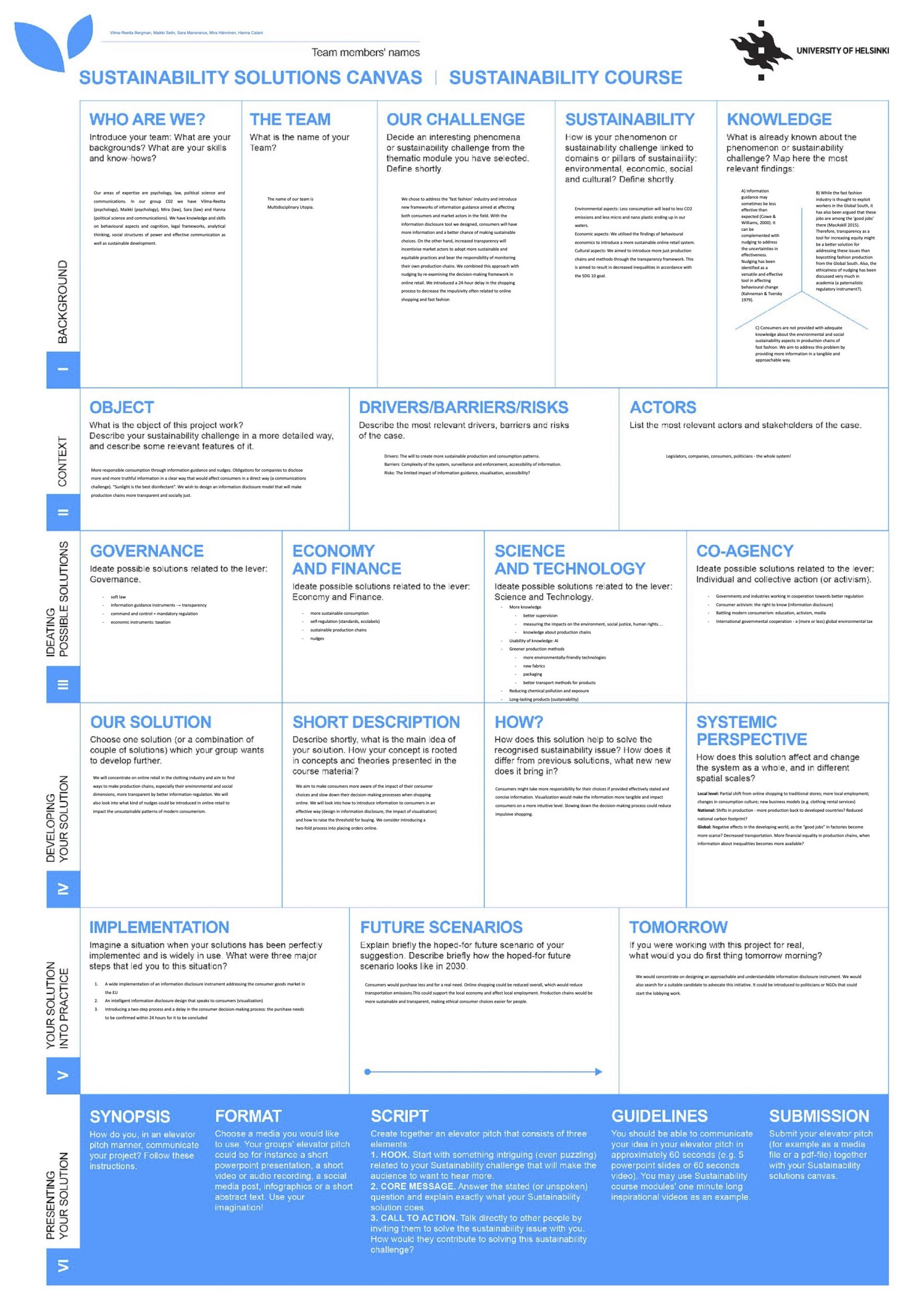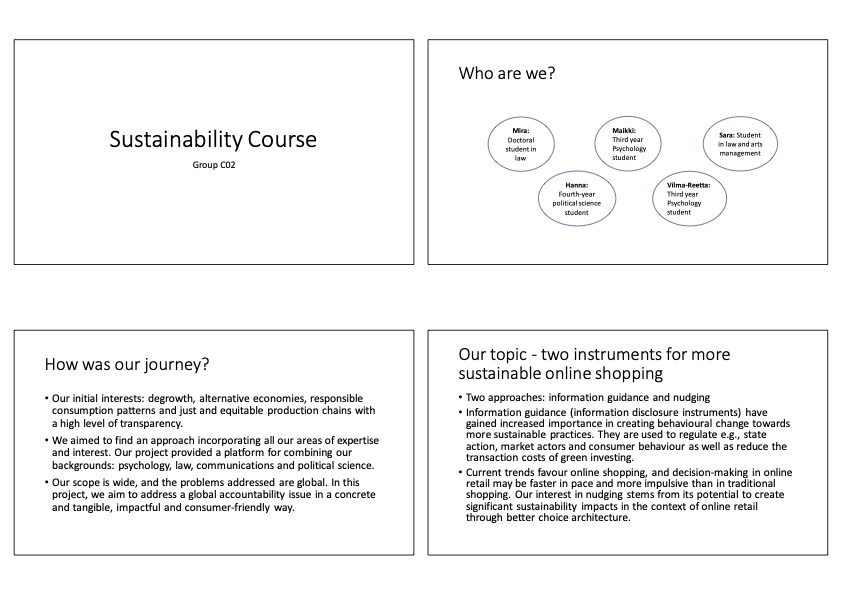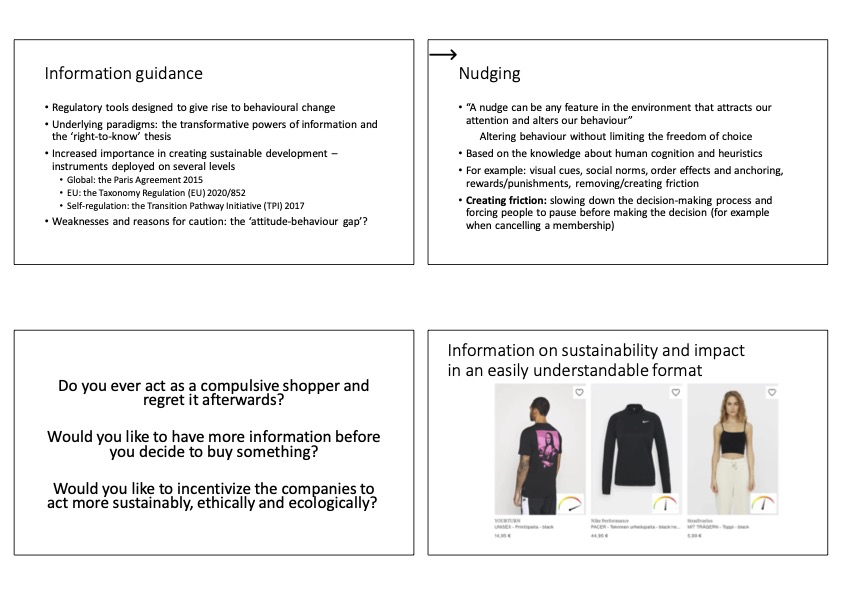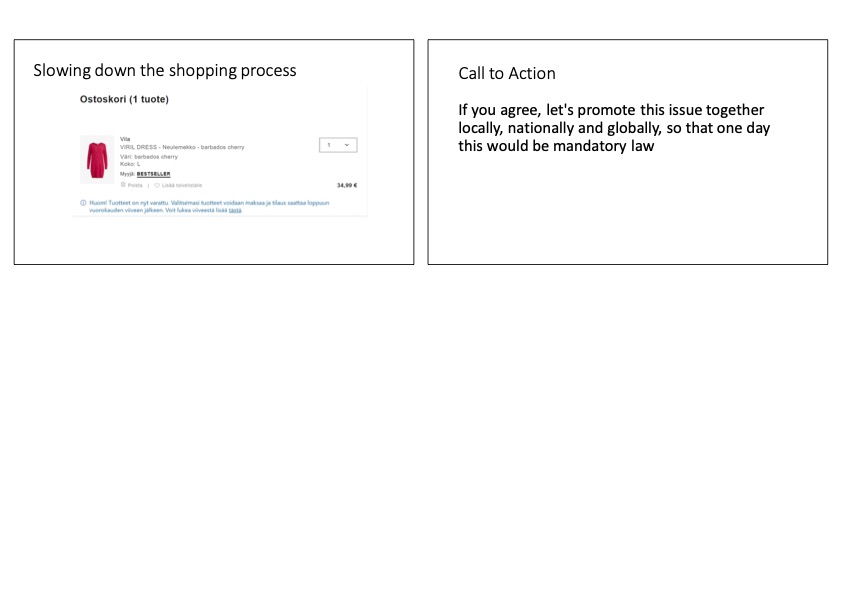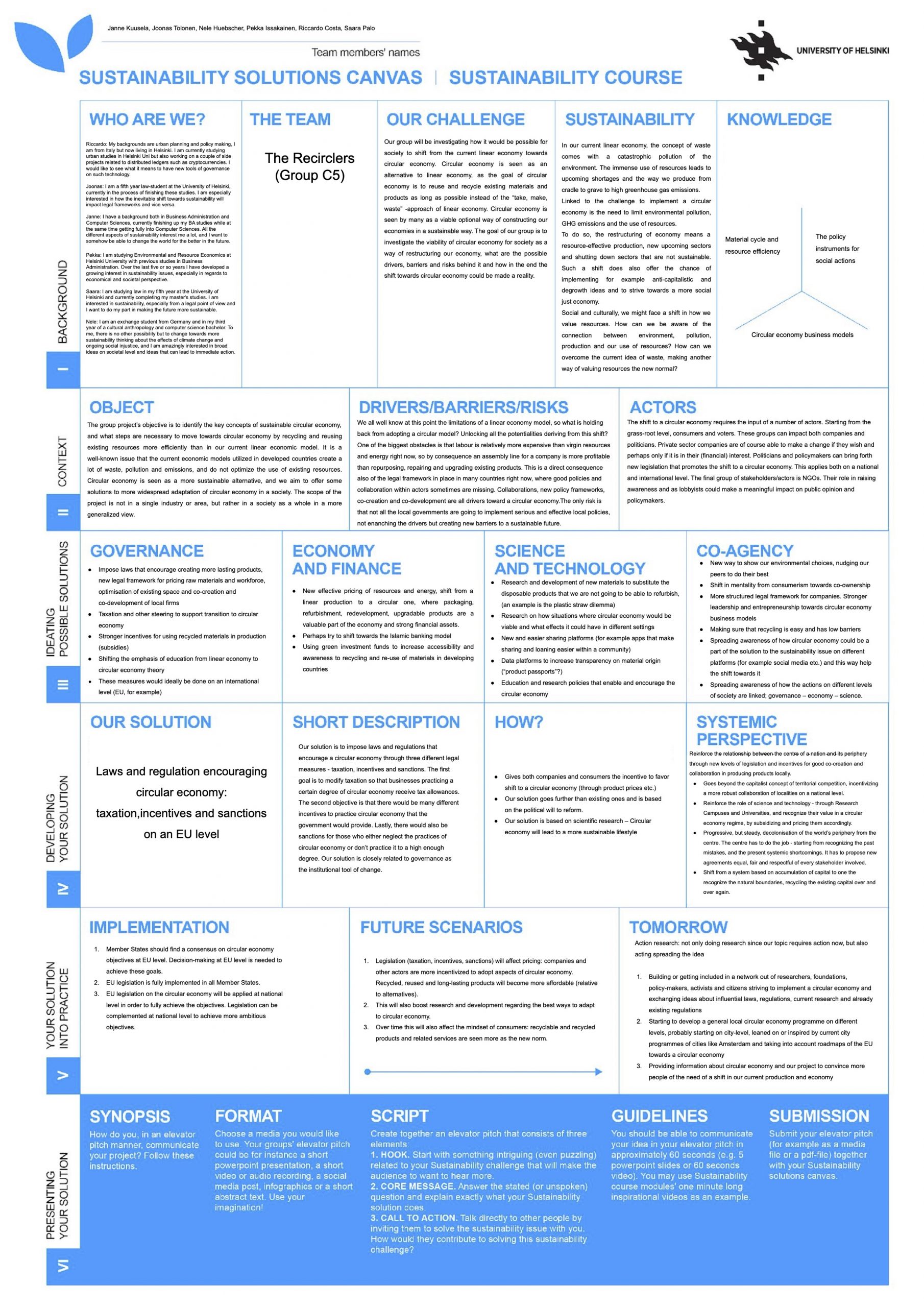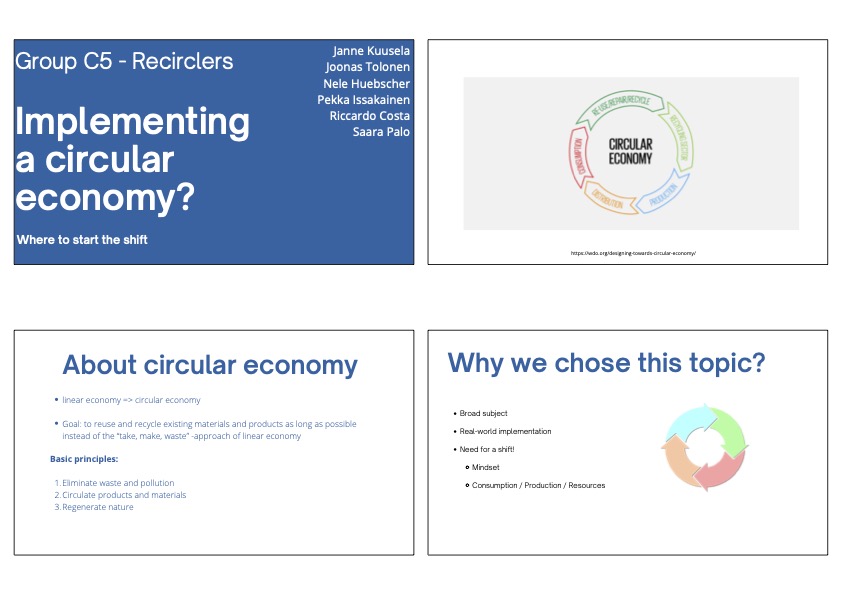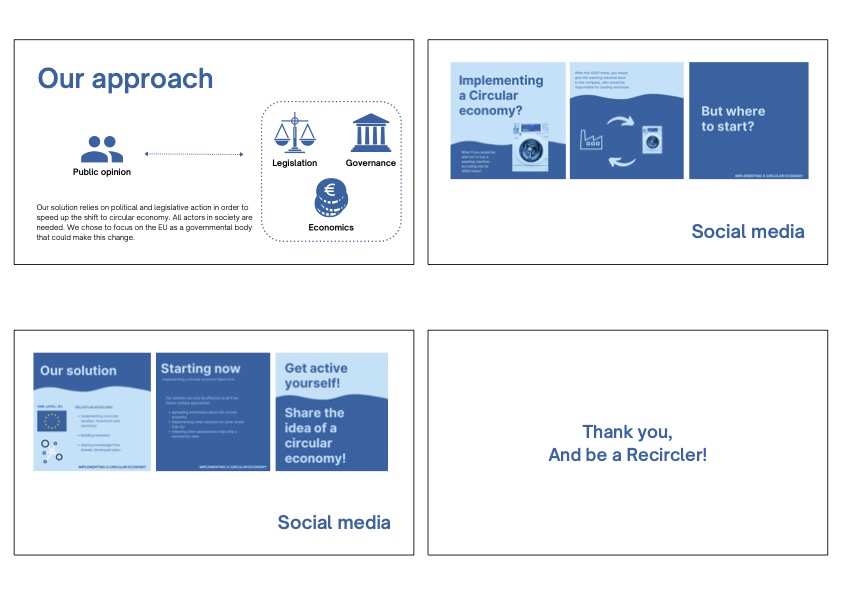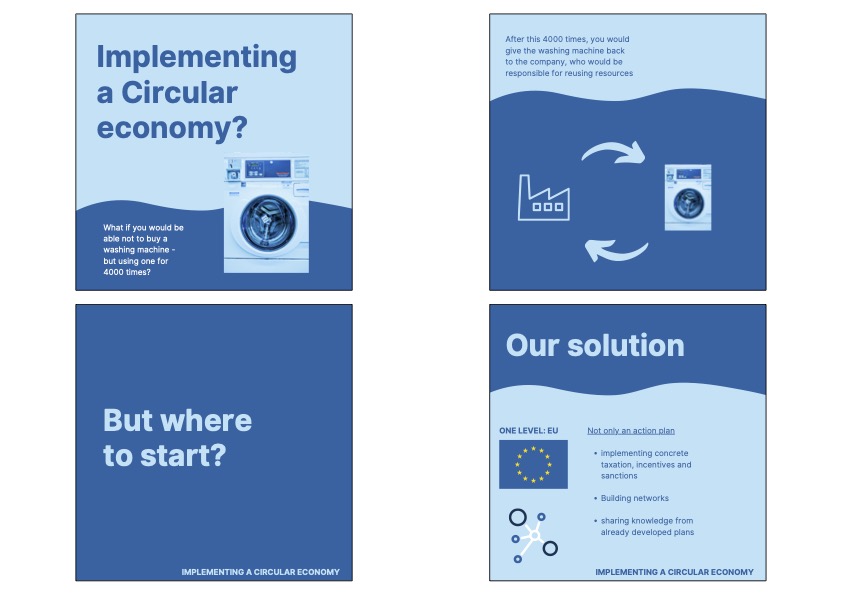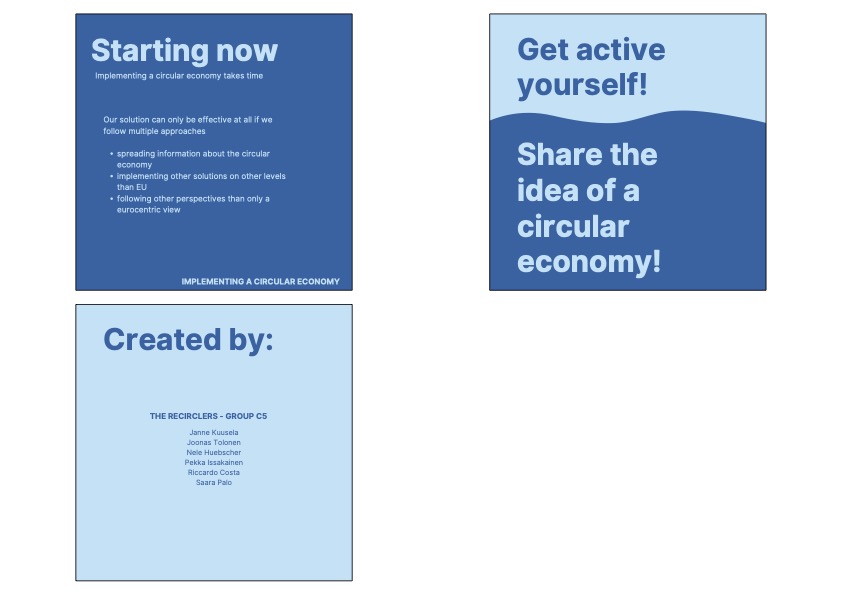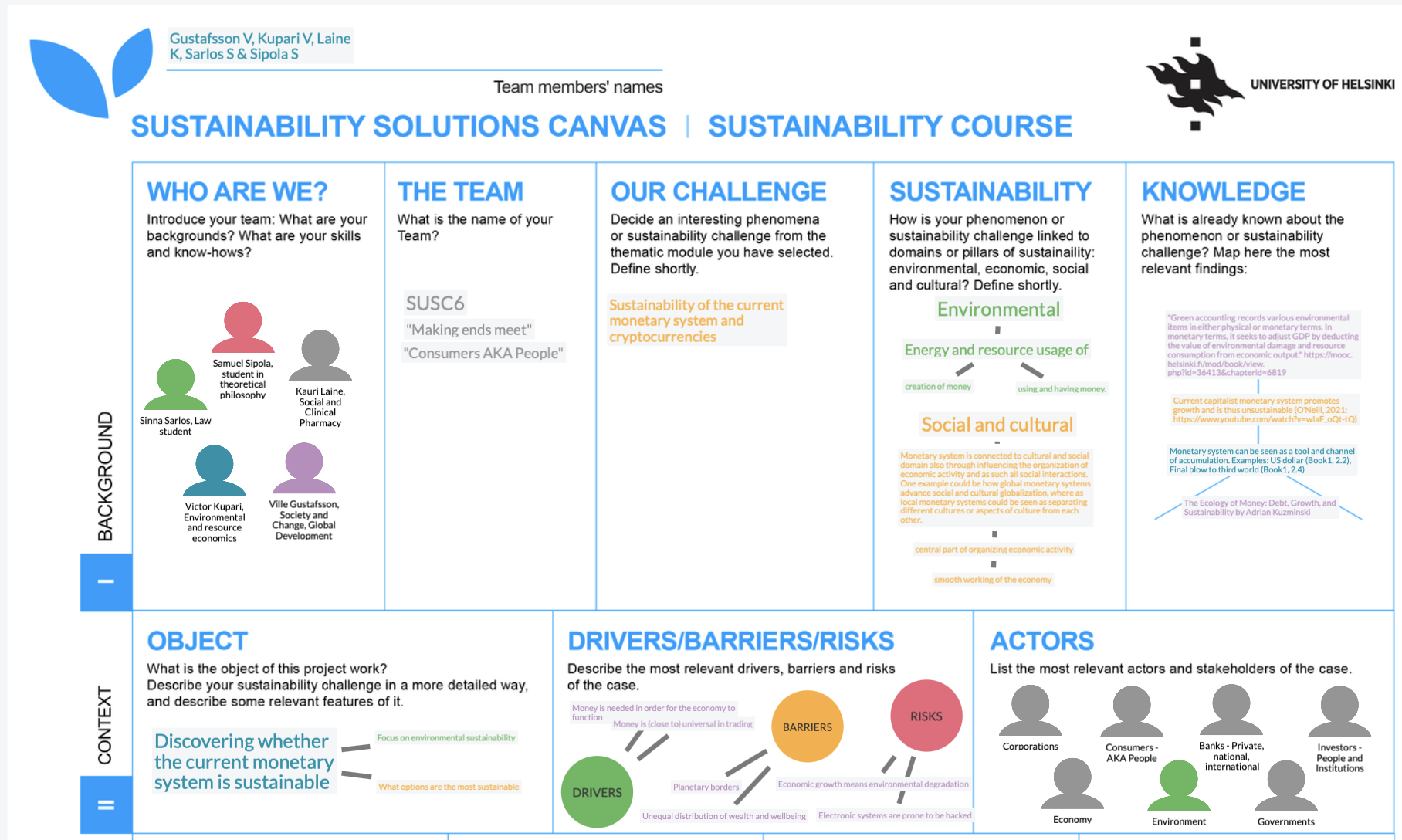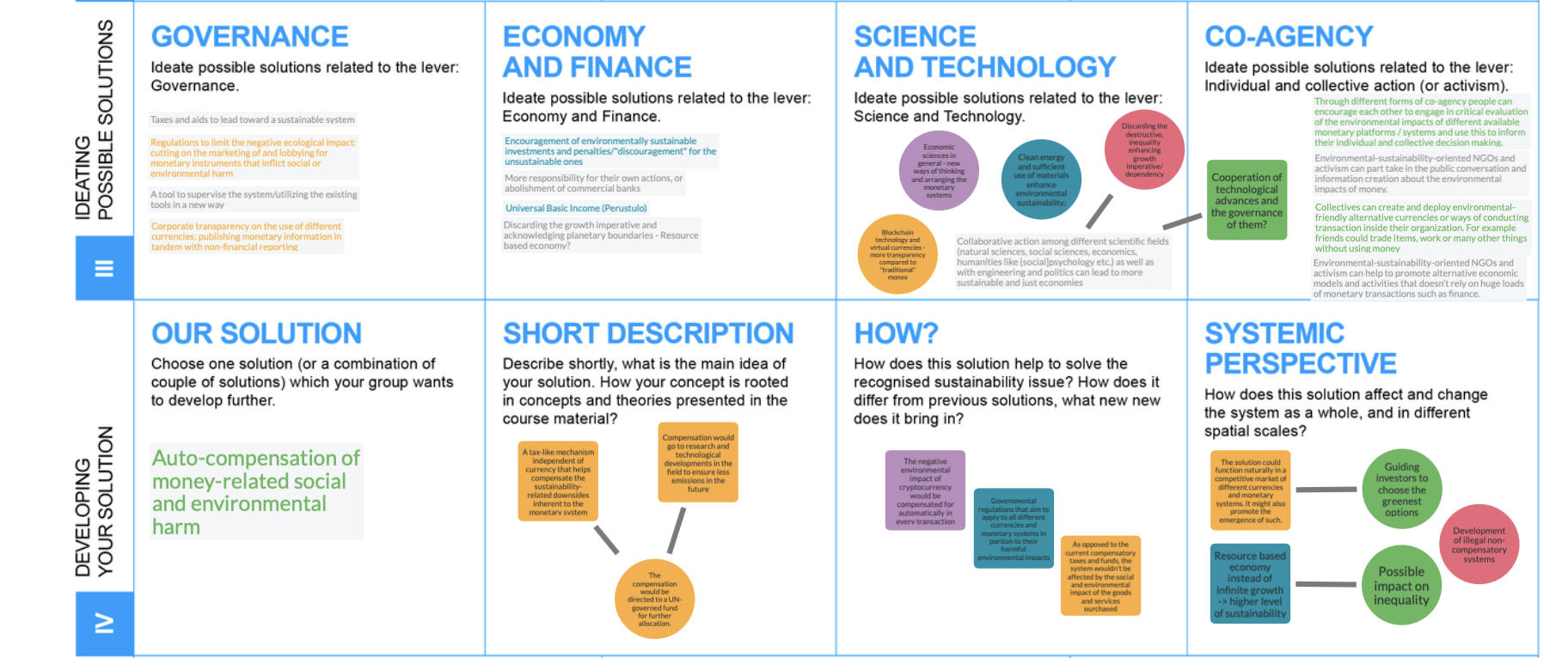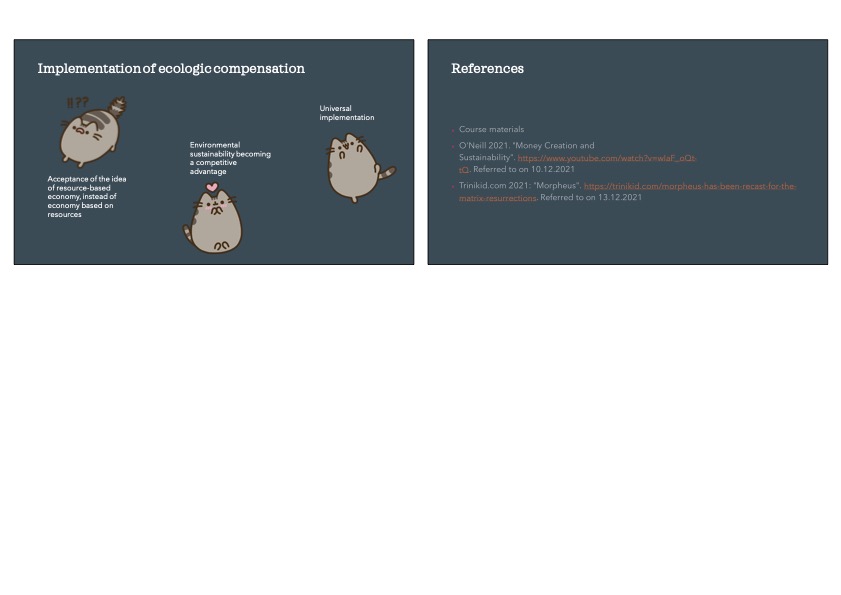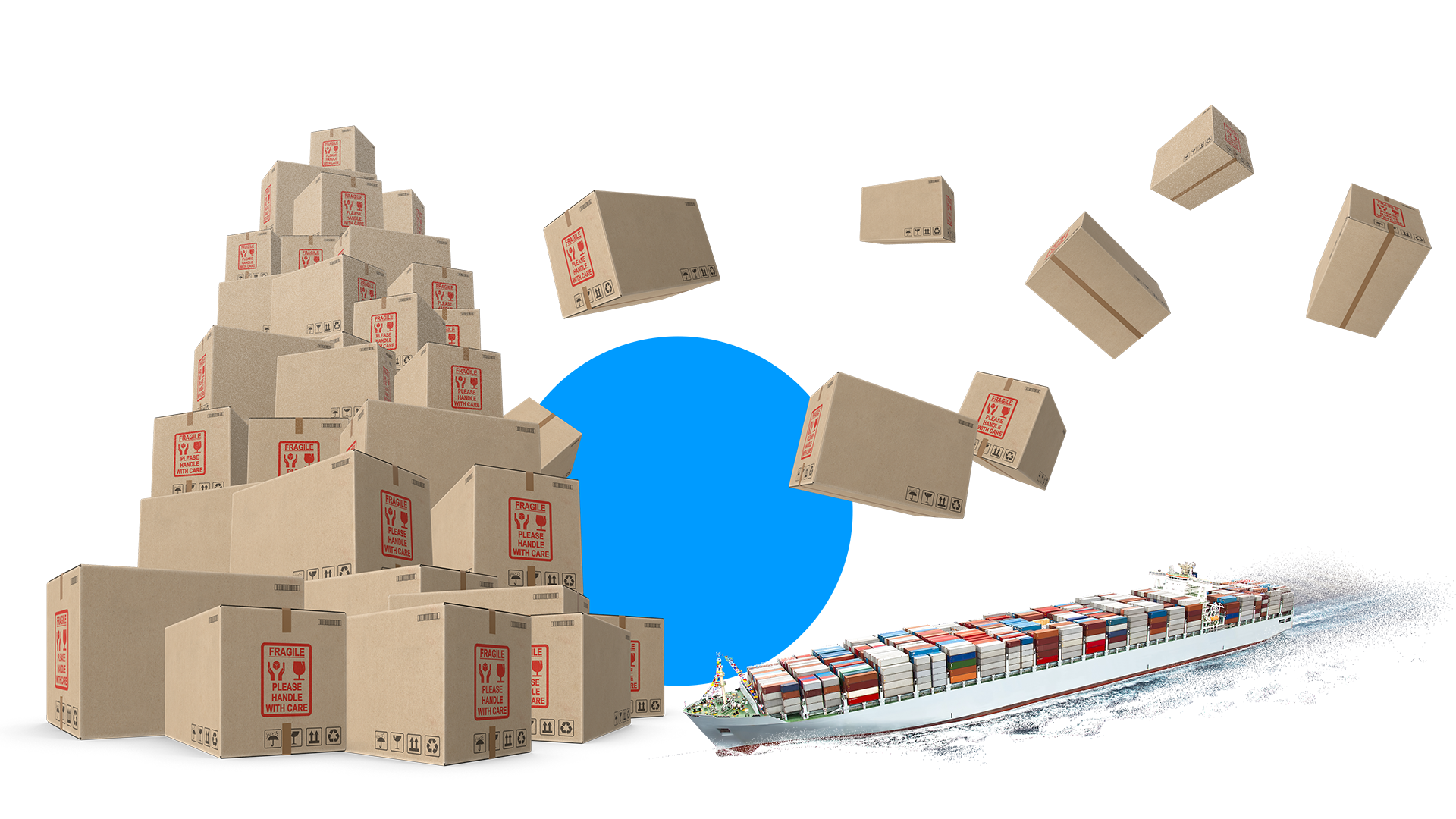
Group C02: Multidisciplinary Utopia
Object: More responsible consumption through information guidance and nudges. Obligations for companies to disclose more and more truthful information in a clear way that would affect consumers in a direct way (a communications challenge). “Sunlight is the best disinfectant”. We wish to design an information disclosure model that will make production chains more transparent and socially just.
Short description: We aim to make consumers more aware of the impact of their consumer choices and slow down their decision-making processes when shopping online. We will look into how to introduce information to consumers in an effective way (design in information disclosure, the impact of visualisation) and how to raise the threshold for buying. We consider introducing a two-fold process into placing orders online.
(click canvas to enlarge)
(click image to enlarge)
(click image to enlarge)
(click image to enlarge)
Group C05: Recirclers
Object: The group project’s objective is to identify the key concepts of sustainable circular economy, and what steps are necessary to move towards circular economy by recycling and reusing existing resources more efficiently than in our current linear economic model. It is a well-known issue that the current economic models utilized in developed countries create a lot of waste, pollution and emissions, and do not optimize the use of existing resources. Circular economy is seen as a more sustainable alternative, and we aim to offer some solutions to more widespread adaptation of circular economy in a society. The scope of the project is not in a single industry or area, but rather in a society as a whole in a more generalized view.
Short description: Our solution is to impose laws and regulations that encourage a circular economy through three different legal measures – taxation, incentives and sanctions. The first goal is to modify taxation so that businesses practicing a certain degree of circular economy receive tax allowances. The second objective is that there would be many different incentives to practice circular economy that the government would provide. Lastly, there would also be sanctions for those who either neglect the practices of circular economy or don’t practice it to a high enough degree. Our solution is closely related to governance as the institutional tool of change.
(click canvas to enlarge)
(click image to enlarge)
(click image to enlarge)
Elevator Speech:
(click image to enlarge)
C06: Making Ends Meet – Consumers aka People
Object: Discovering whether the current monetary system is sustainable. Focus on environmental sustainability.What options are the most sustainable.
Short Description: A tax-like mechanism independent of currency that helps compensate the sustainability-related downsides inherent to the monetary system. Compensation would go to research and technological developments in the field to ensure less emissions in the future. The compensation would be directed to a UN-governed fund for further allocation.
(click canvas parts to enlarge)
(click image to enlarge)
(click image to enlarge)
(click image to enlarge)
Other Groups (unpublished assignments)
These project assignments are not public, but if you’re a Sustainability Course (SUST-001) Autumn 2021 student, you may access them in Mooc using the links below.
C01: Done With Overshoot (Solving middle-class overconsumption in OECD -countries)
C10: Pantti-Harakat (more efficient recycling and reuse of waste)
